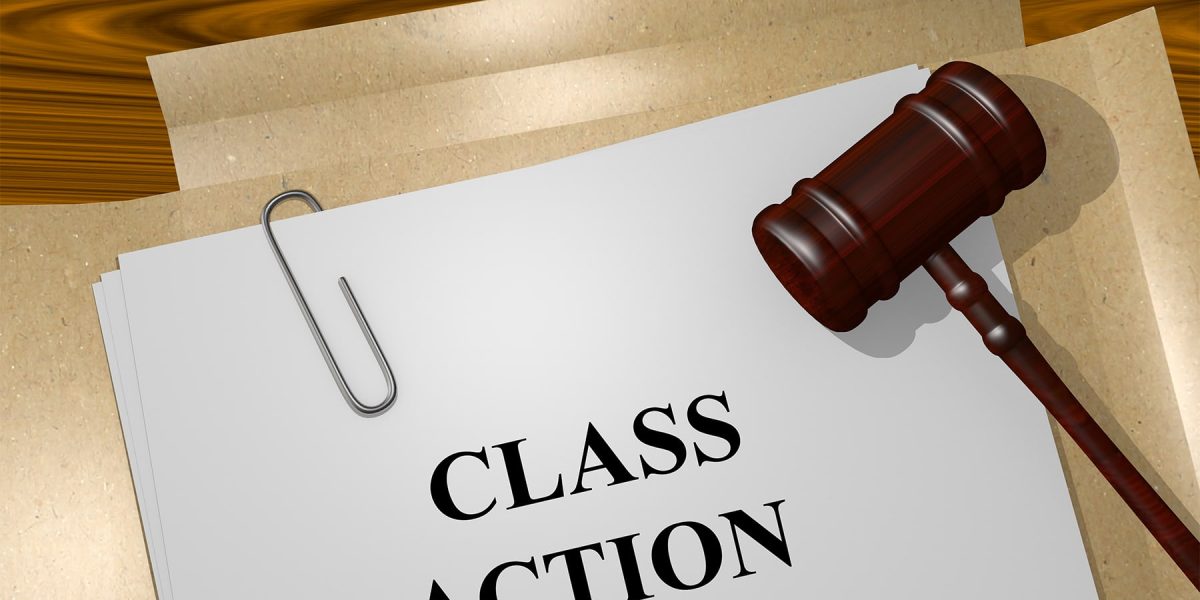Assertio Class Action Lawsuit Breakdown: Your Legal Companion
Assertio Class Action Lawsuit Breakdown: Your Legal Companion
Blog Article
Checking Out Course Action Claims: What You Need to Know
Class action legal actions have actually ended up being significantly widespread in today's legal landscape, with individuals signing up with pressures to look for remedy against companies and corporations. In this conversation, we will certainly explore the ins and outs of class action suits, dropping light on their meaning, the requirements for filing, and the possible benefits and disadvantages entailed.
The Definition of Class Action Claims
A class action legal action is a legal activity filed by a team of individuals that have similar insurance claims versus an accused. Course activity suits are usually brought when the number of prospective complainants is too large for private legal actions to be functional.
One of the crucial elements of a course activity legal action is that the lead plaintiff, likewise referred to as the class rep, stands for the passions of all the course members. The court designates the lead complainant based on their capacity to fairly and effectively represent the course. The lead plaintiff functions very closely with the class activity attorney to develop a strong situation and seek payment or other treatments in behalf of the whole course.
In order for a course activity claim to proceed, the court needs to accredit the course. This means that the court establishes that the legal action meets particular demands, such as numerosity (a big enough number of course participants), commonness (common concerns of legislation or reality), typicality (the cases of the lead plaintiff are regular of the class), and adequacy of representation (the lead plaintiff and class advise can standing for the class's interests) As soon as the class is accredited, the suit can move on, and any kind of judgment or negotiation got to will use to all course members unless they choose to opt-out.
Course action claims offer a necessary function in supplying access to justice for people who may not have the resources to seek their insurance claims independently. They likewise advertise performance in the lawful system by settling similar claims into a single activity, reducing the problem on both the court and the celebrations involved.
Demands for Submitting a Course Action Legal Action

Another demand is that the course should be sufficiently various. The precise variety of class members required may differ relying on the jurisdiction and the nature of the situation. Nonetheless, it is typically anticipated that the class needs to be large sufficient that signing up with all the private plaintiffs right into a single legal action is more reliable than having numerous separate legal actions.
In addition, it is important that the course agent, who is the private or entity bringing the lawsuit on part of the class, has common insurance claims and defenses to those of the course members. The representative must additionally have the ability to adequately and relatively stand for the rate of interests of the entire class.

Advantages and Downsides of Class Activity Legal Actions
Class action legal actions offer both advantages and drawbacks for complainants and accuseds associated with the legal process. On the one hand, among the substantial advantages of class activity claims is that they give a efficient and economical means for people with similar insurance claims to pursue justice jointly. By consolidating numerous comparable situations right into one lawsuit, course actions simplify the lawful procedure and conserve time and resources for both plaintiffs and defendants.
One more benefit of course action claims is that they enable individuals with restricted sources to look for settlement for their problems. In instances where the prospective recovery is tiny, private legal actions may not be financially practical. Nonetheless, by signing up with pressures in a class activity, plaintiffs can merge their sources and boost their opportunities of acquiring a fair resolution.
In addition, course activities can promote social adjustment by holding firms accountable for their activities. By bringing focus to extensive misconduct or defective products, class actions can push companies to alter their techniques, enhance product security, or execute reforms.
However, class actions also have disadvantages. One potential drawback is that individual complainants might have restricted control over the litigation procedure and the best end result of the instance. The lead complainants and their lawyers generally make vital decisions in behalf of the entire class, which might not always review align with the private passions of each class member.
Furthermore, course actions can be time-consuming and prolonged, often taking years to get to a resolution. The complexity and size of these suits can cause delays and prolonged litigation, which can be frustrating for both plaintiffs and defendants looking for a timely resolution.
Actions Entailed in a Course Action Lawsuit
The process of a class activity claim generally starts with the identification of a prospective course and the declaring of a grievance. When a team of individuals that share similar cases against an accused is identified, the lead complainant, or course rep, files a problem in support of the entire course. This issue outlines the claimed misdeed and looks for problems or other alleviation for all participants of the course.
After the complaint is filed, the court will establish whether the case meets the demands for class qualification. These demands typically consist of numerosity (a large adequate class), commonness (comparable legal insurance claims), typicality (the lead plaintiff's cases are representative of the course), and competence of depiction (the lead complainant and their attorney can effectively stand for the course's rate of interests)
If the court certifies the class, notice is given to all prospective class members, providing the chance to opt-out if they desire to seek their very own specific insurance claims - Archer-Daniels-Midland class action lawsuit. If a sufficient variety of class members remain, the situation will proceed to the discovery stage, where both sides gather evidence and details appropriate to the insurance claims
Adhering to exploration, the parties may participate in negotiation arrangements or proceed to test. If the case mosts likely to trial and the course dominates, the court will certainly identify the appropriate problems or relief to be granted to the course participants.
Recent Landmark Course Action Lawsuits
With a solid understanding of the steps associated with a course activity suit, it is now crucial to analyze some current site cases that have made a considerable influence in the lawful landscape. Future FinTech class action lawsuit. These instances have not just shaped the way course activity legal actions are performed but have likewise caused modifications in numerous sectors
One such landmark instance is the Volkswagen exhausts scandal, which resulted in the biggest course activity negotiation in auto background. In 2015, it was revealed that Volkswagen had actually set up software application in their vehicles to rip off emissions examinations. This deceptiveness impacted numerous customers worldwide, causing a class activity legal action. The settlement gotten to in 2016 totaled up to roughly $15 billion, compensating afflicted auto proprietors and enforcing penalties on Volkswagen.
One more noteworthy case is the Johnson & Johnson talcum powder claim. Thousands of this content women filed suits against the company, declaring Check This Out that their talcum powder products caused ovarian cancer cells.
These current spots cases demonstrate the power of course action legal actions in holding firms answerable for their activities and seeking justice for damaged people. They act as examples of exactly how course action claims can bring around considerable modifications and secure the civil liberties of consumers.
Conclusion
Finally, course activity claims are a lawful mechanism that permits a team of individuals to jointly look for justice for a typical grievance. While they use a number of benefits such as efficiency and cost-effectiveness, there are likewise disadvantages such as possible for limited payment and prolonged lawful process. Comprehending the actions and needs entailed in filing a course activity claim is important for people looking for to pursue this lawful avenue. Current site course action legal actions have actually highlighted the significance of such situations in promoting for customer rights and company accountability.
One of the key elements of a course action lawsuit is that the lead complainant, additionally known as the class agent, stands for the passions of all the course participants.In order for a class action suit to continue, the court has to accredit the class. This indicates that the court determines that the lawsuit satisfies certain demands, such as numerosity (a large adequate number of class members), commonness (common questions of legislation or fact), typicality (the cases of the lead plaintiff are regular of the course), and adequacy of depiction (the lead complainant and course advise are qualified of representing the class's interests) Once the course is accredited, the claim can move forward, and any type of judgment or settlement reached will use to all course participants unless they choose to opt-out.
The procedure of a class action lawsuit commonly starts with the identification of a prospective course and the declaring of a complaint.
Report this page